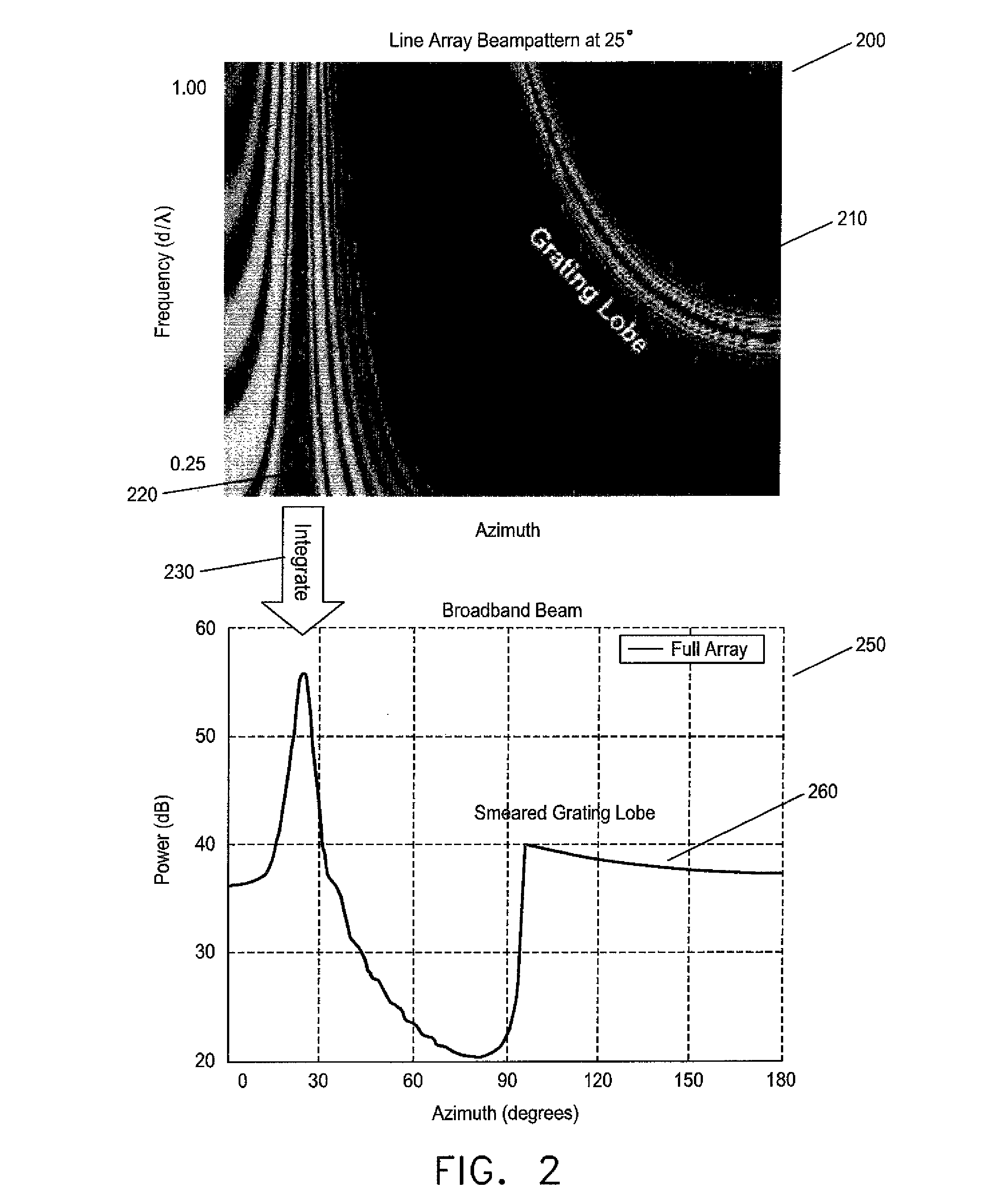Method and system for isolating and reducing grating lobe interference
a technology of interference and grating lobe, applied in direction finders, instruments, non-resonant long antennas, etc., can solve the problems of increasing sensor costs and processing requirements, reducing operational effectiveness in certain cases, and requiring significant sensor hardware costs to reduce grating lobe interference, etc., to achieve the effect of saving sensor hardware cost and weigh
- Summary
- Abstract
- Description
- Claims
- Application Information
AI Technical Summary
Benefits of technology
Problems solved by technology
Method used
Image
Examples
Embodiment Construction
[0019]Reference will now be made in detail to the present exemplary embodiments of the invention, examples of which are illustrated in the accompanying drawings.
[0020]Referring to FIG. 5, a graph is shown illustrating an exemplary embodiment of the invention. A line array 500 is shown separated into an auxiliary-array 510, a first sub-array 520a, and a second sub-array 520b. While only two sub-arrays are shown it is to be understood that any number of sub-arrays may be used. The sub-arrays 520a and 520b each comprise M elements 522a-n. The auxiliary array 510 comprises 2M elements 512a-n. It is to be understood however that auxiliary array 510 may have any integer multiple of elements of the sub-arrays, depending on the desired maximum operating frequency, also known as the design frequency, of the line array 500. As shown, the first and second sub-arrays 520a and 520b have been under-sampled, meaning that their element spacing is greater that ½ the operating wavelength associated w...
PUM
 Login to View More
Login to View More Abstract
Description
Claims
Application Information
 Login to View More
Login to View More - R&D
- Intellectual Property
- Life Sciences
- Materials
- Tech Scout
- Unparalleled Data Quality
- Higher Quality Content
- 60% Fewer Hallucinations
Browse by: Latest US Patents, China's latest patents, Technical Efficacy Thesaurus, Application Domain, Technology Topic, Popular Technical Reports.
© 2025 PatSnap. All rights reserved.Legal|Privacy policy|Modern Slavery Act Transparency Statement|Sitemap|About US| Contact US: help@patsnap.com



